Up until this point, all of the photographs on my blog have been taken with my iPhone camera. *hangs head* Yes, even the ones in the post Beauteous, Bountiful, Botanical Blue! There, I admitted it. It’s time, though, for me to dust off my old Canon Rebel XT and start taking REAL camera photos.
I am a very aesthetically-driven person, and fabulous photos are what first draw me into a blog, and then ensure that I stick around to follow future posts. Even great content, without clear or aesthetically composed photos, is less desirable to me than a blog with lots of eye candy and occasional tidbits of helpful wisdom. When a blog has BOTH fabulous photos and consistently helpful or interesting content, I’m an immediate fan and follower.
I’m trying to use my blog as a way to show the world what I am creating, and without great photographs to let my readers see the depth of beauty I see, that won’t happen. I think I take decent photos with my phone, and to honest, it has been a challenge to re-learn how to use my Canon to take great indoor photos. It’s a work in progress. Outside with perfect natural light it’s a cinch, but inside my fairly dark craft cave-loft, taking clear photographs is a lot more challenging. But I plan to try.
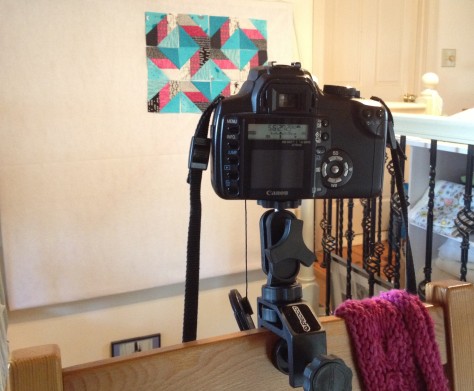
I bought a new camera battery charger and a clamp-on tripod for my Canon, hoping those tools will help. Next up is to figure out how to improve the lighting. Any suggestions, short of finding a different room in which to photograph?
Here are some comparison shots to see the difference between my iphone photos and Canon with tripod photos (without editing and with some editing in Picassa):
My current quilt-in-progress

Canon photo with no editing

My cutting table
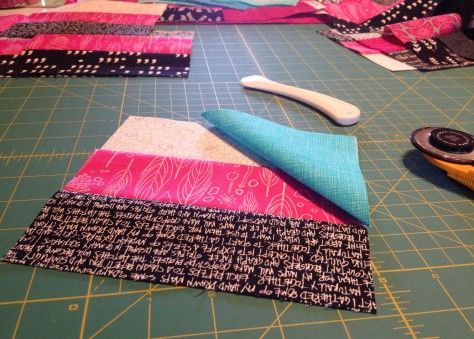
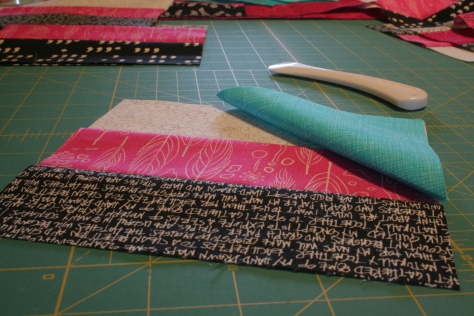
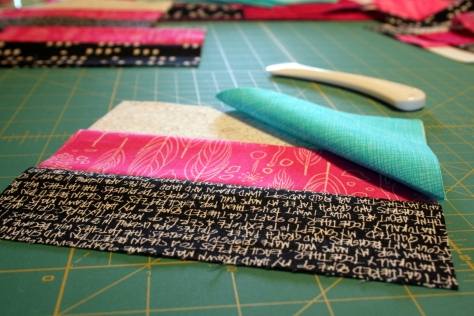
So what do you think? Which photos are your favorite?
If you are a craft blogger, how do you take the perfect photos? I need some tips!


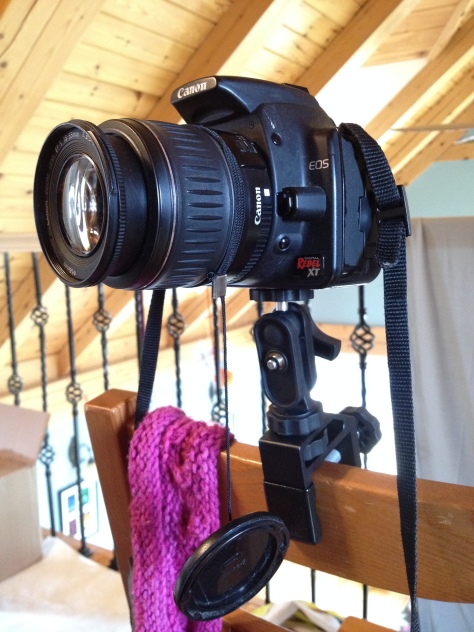
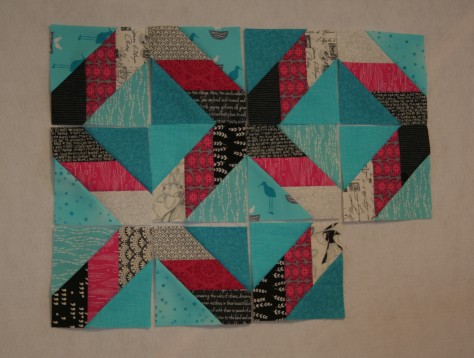
For your question : For your current project, my fave is the iPhone. I’ll admit it! But for your cutting table, I like you edited Canon.
I’m still try to master pictures. I agree with you, it makes a blog. I’ve had my reflex Canon for 3 years ow and I haven’t taken the time to sit and learn about the manual settings to stop relying on the camera.
At home, I am blessed with LOTS of windows. But in my sewing space, I also love to use my Ott-Lite. It helps when I don’t want to use a flash. Oh, and I avoid flash like the plague when I can!!!
LikeLike
I use my canon d300 for pretty much all my photography but I also do a lot of post-editing in Photoshop to make up for the fact that I’m often lazy. 🙂
Properly exposed images are the best thing to start with though, and I see your photos are kind of dark with your canon. Since you have a tripod, you don’t need to worry about long exposures (which when hand-held get blurry). Are you using manual mode or letting the camera choose aperture and shutter speed?
When the camera is set to full automatic, it will try to make whatever it’s pointing out exposed to be medium brightness (50% grey). If you’re pointing at something white, that means it will under-expose the image (be too dark) and if you point it at something black it will over-expose it. With that in mind, there should be some way to override the automatic to add an exposure level or two. White is 2 stops above medium grey, black 2 stops below, roughly. You can play around with it and see if you can get the proper exposure. 🙂 Otherwise, I’d suggest just switching to manual and learning how to do it that way. Graphics programs will often make under-exposed images extra-contrasty (as is the case in your first example) which isn’t always flattering to fabric. 🙂
I can seriously babble about this forever, and I have no idea if I’m making any sense. I’m not sure what you know and don’t know, and I don’t want to offend you by telling you something you already know. 🙂
LikeLike
Anne! Thank you! I tried to email you in reply, but couldn’t find your email address. Anyway, this is definitely helpful! I have my camera set to auto focus, but I use the Av or P settings instead of the completely-automatic photo setting. I do need to read up on manual settings and play around. Tv is the one that affects the exposure and amount of light let in, right? I guess it’s time to pull out the camera manual now that I have a tripod. I’ve played a lot with depth of field (Av?) since previously, most of my photographs have been taken outside in full natural light. Now that I’m shooting inside, I need to learn about light. Although, I’m tempted to just take all of my sewing stuff outside to take photos! Thank you for your input!
LikeLike
Oops! email is anne @ play-crafts.com. 🙂
Av is aperture priority, which means you set the aperture and the camera figures out how long to keep the shutter open. Aperture controls that depth of field thing. You know how some pictures have just one thing in focus and the rest goes blurry? That’s a small depth of field. If everything is in focus that’s a big depth of field. 🙂 (think of it as depth of things that are in focus).
Tv is Shutter speed priority, which means you set how long you want your shot to take, and the camera will change the aperture to accommodate it. The longer the shutter is open, the more camera movement will be captured. The analogy most people use is that a properly exposed image is like a fully filled bucket of water. You can either turn on the water a little and let the water trickle in (small aperture, long shutter speed) or you can open the water a lot and let it gush in (big aperture, short shutter speed.)
The other gotcha with aperture which confused me FOREVER is that the numbers are actually the bottoms of fractions. So 3 = 1/3 and 22 = 1/22 which is why the smaller the number, the bigger the aperture opening! (1/3 is bigger than 1/22, but 3 is smaller than 22 so it confused me for ages.)
Oh, and yes, take your projects outside. The light quality is almost always better out there. 🙂 I wrote up a tutorial for that at some point.
http://www.play-crafts.com/blog/tutorial-quilt-photography/
Clearly this is one of my favorite subjects to prattle on about. I’d be more than happy to answer questions or help however I can! 😀
LikeLike
No contest. The Canon photos are much livelier somehow. The iPhone photos are OK but look a bit flat
LikeLike
Look into the “P” setting on your camera. It controls the light. I often don’t shot full manual, but if you can it will give you the best control.
LikeLike